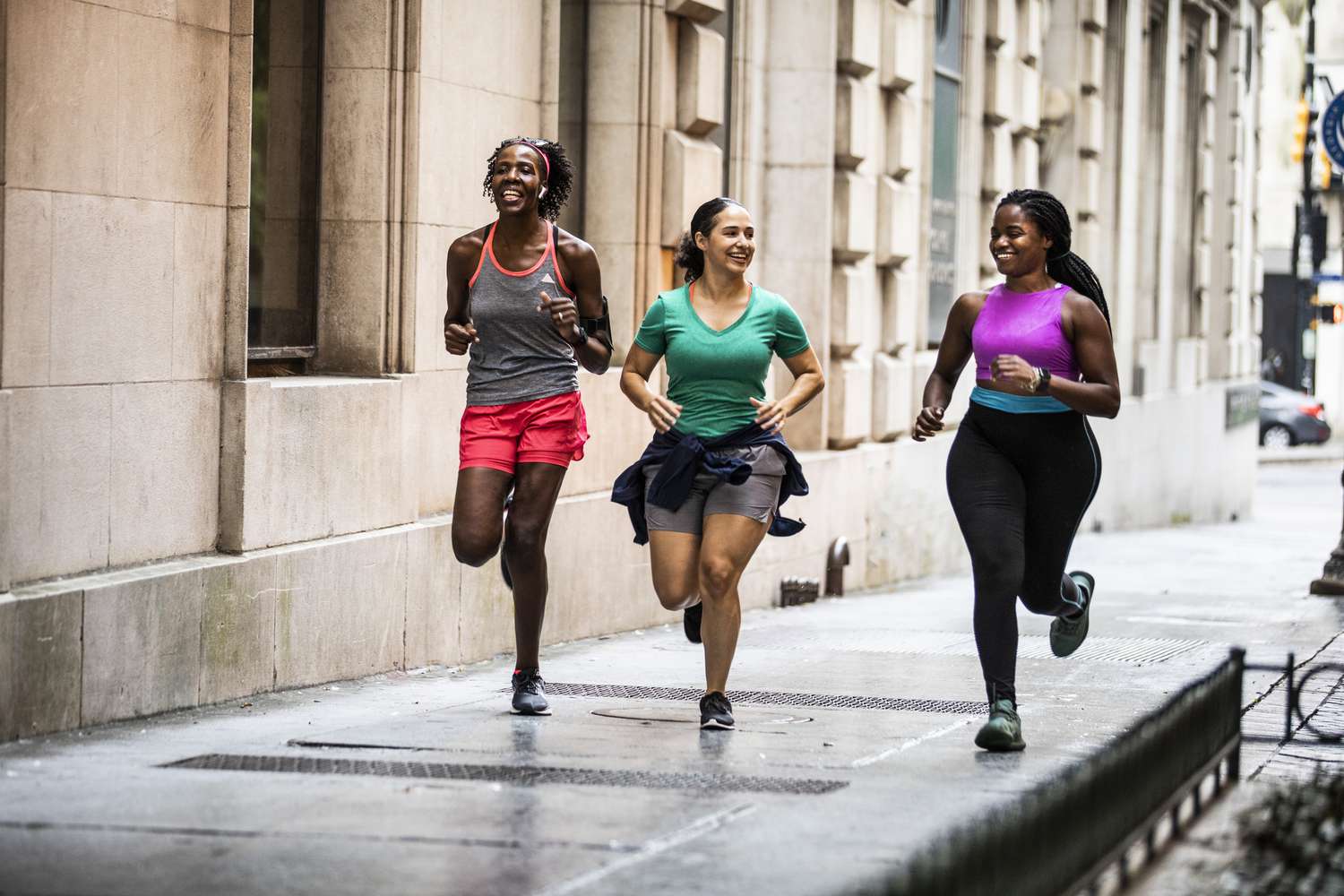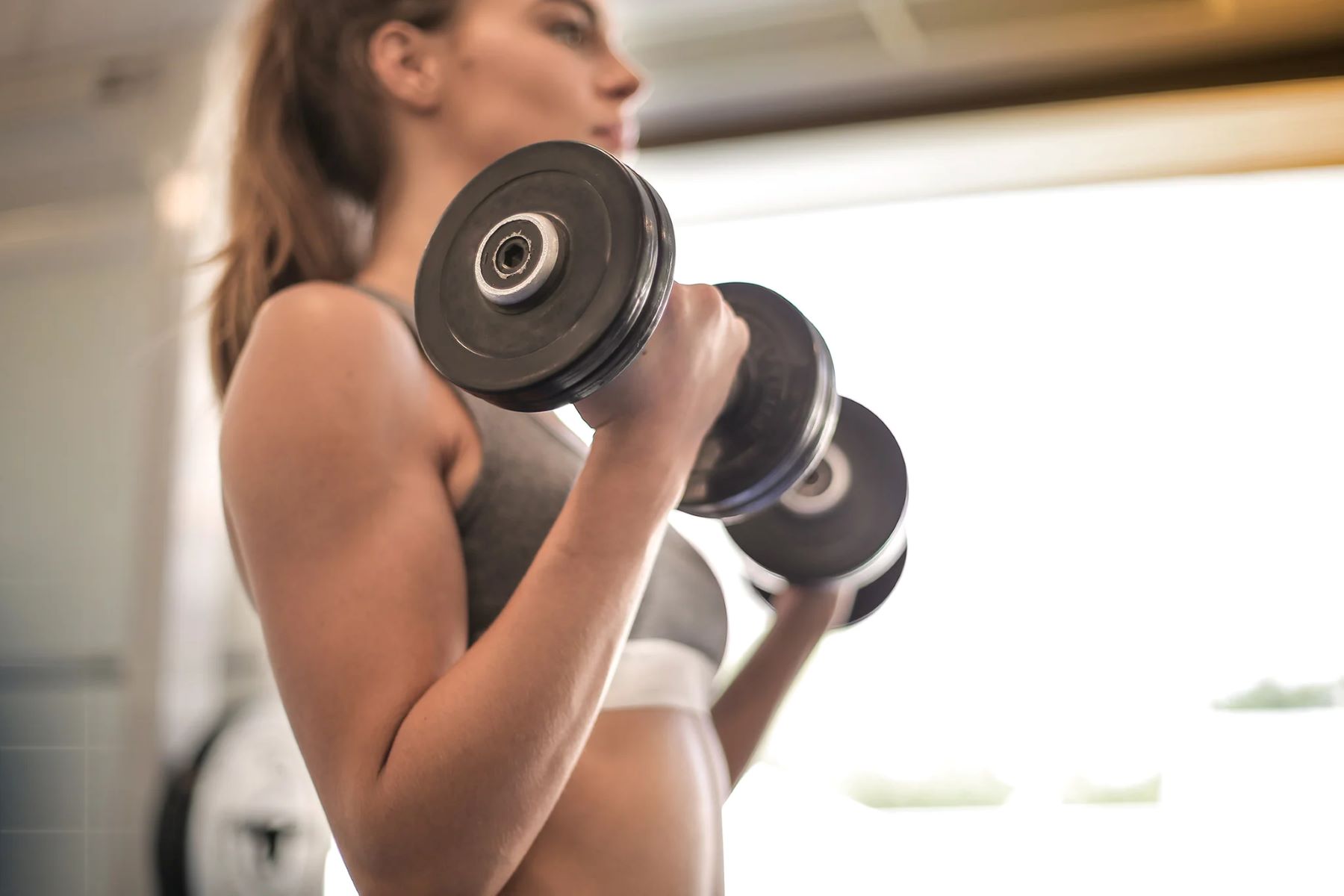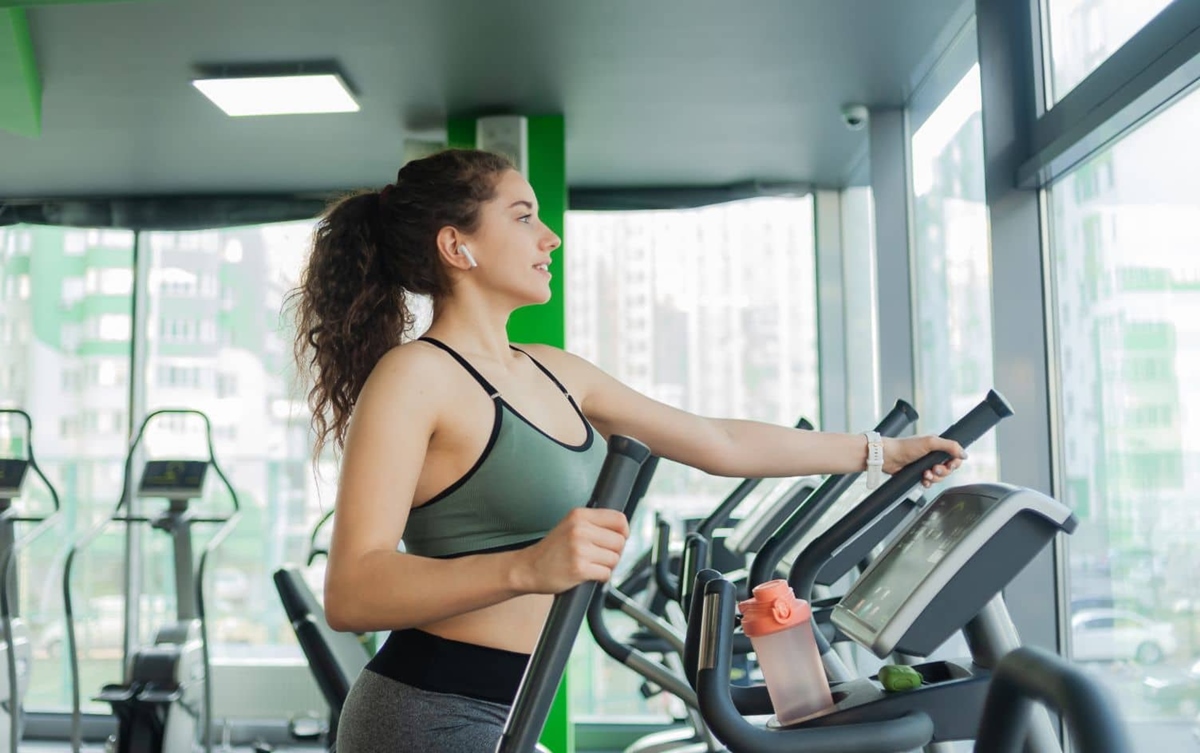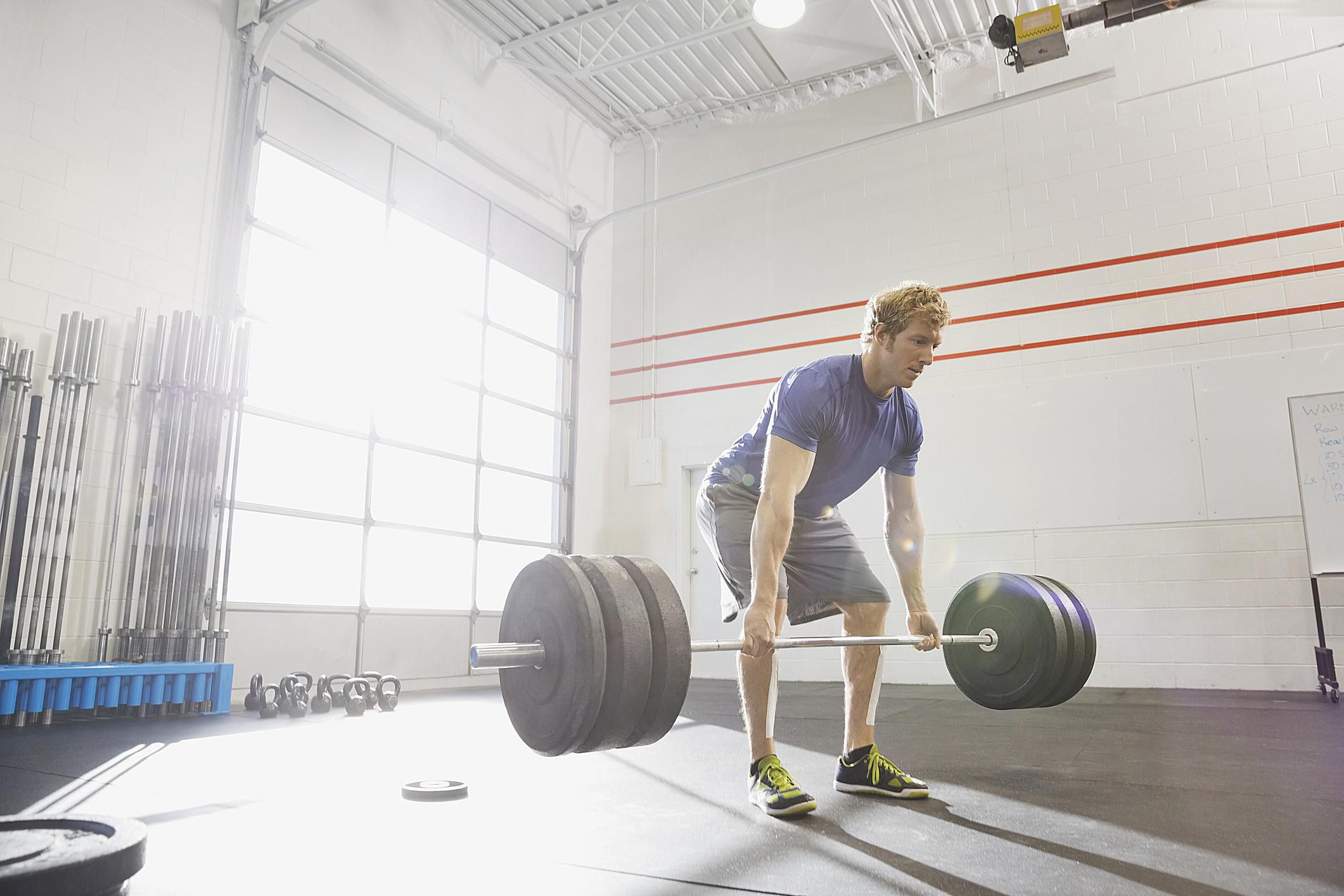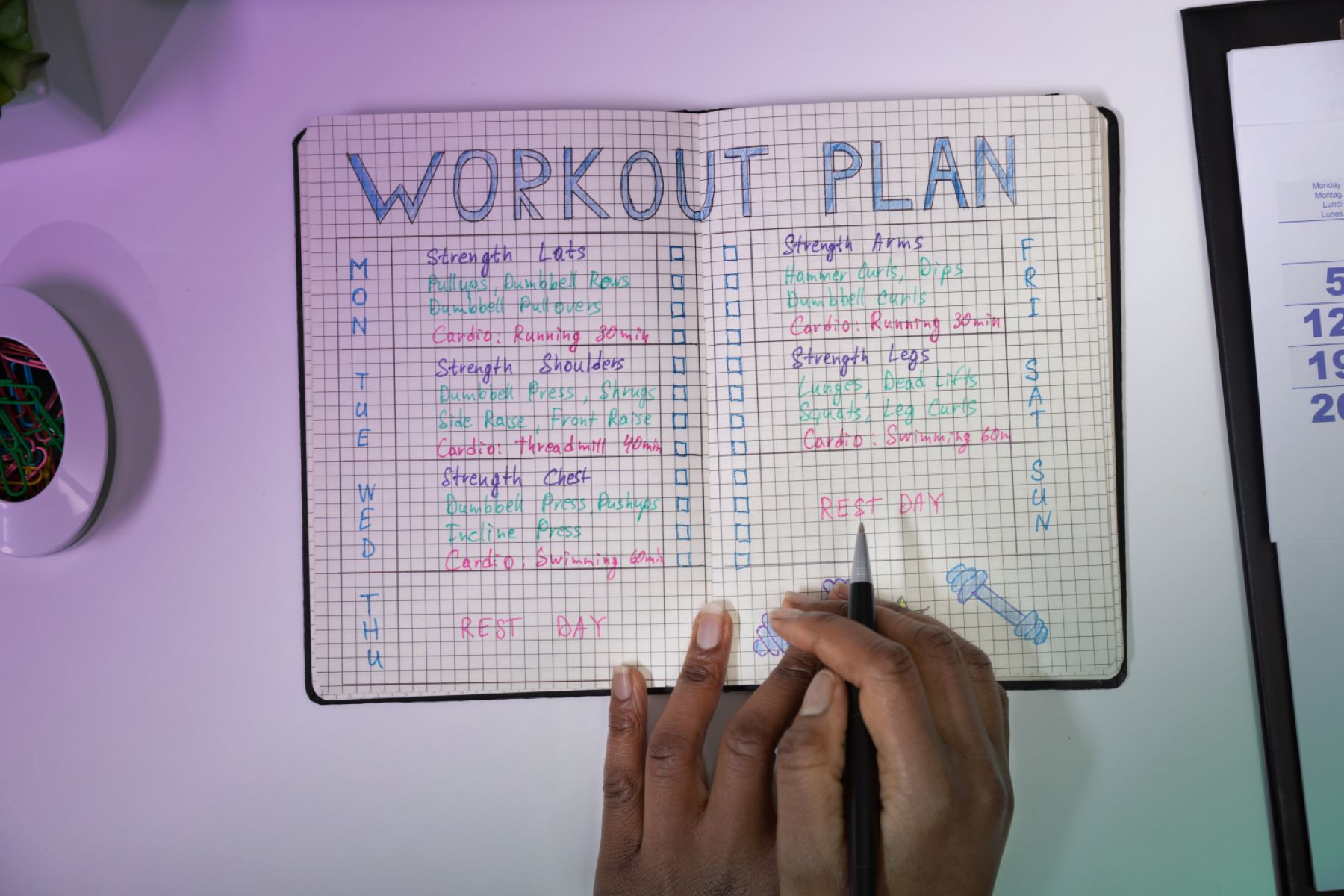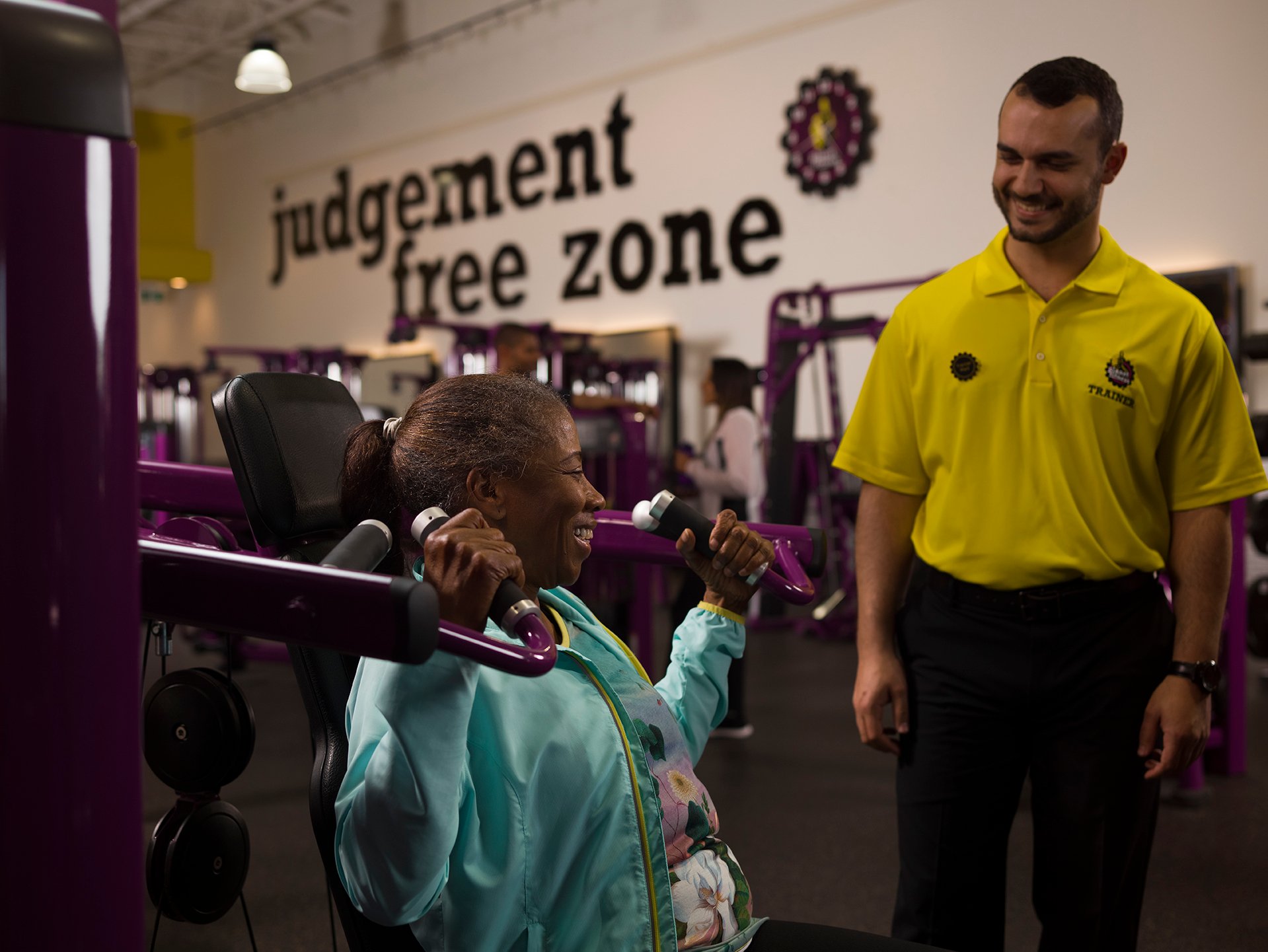Home>Misc>Featured>Why Do Exercise Needs Vary Between Individuals
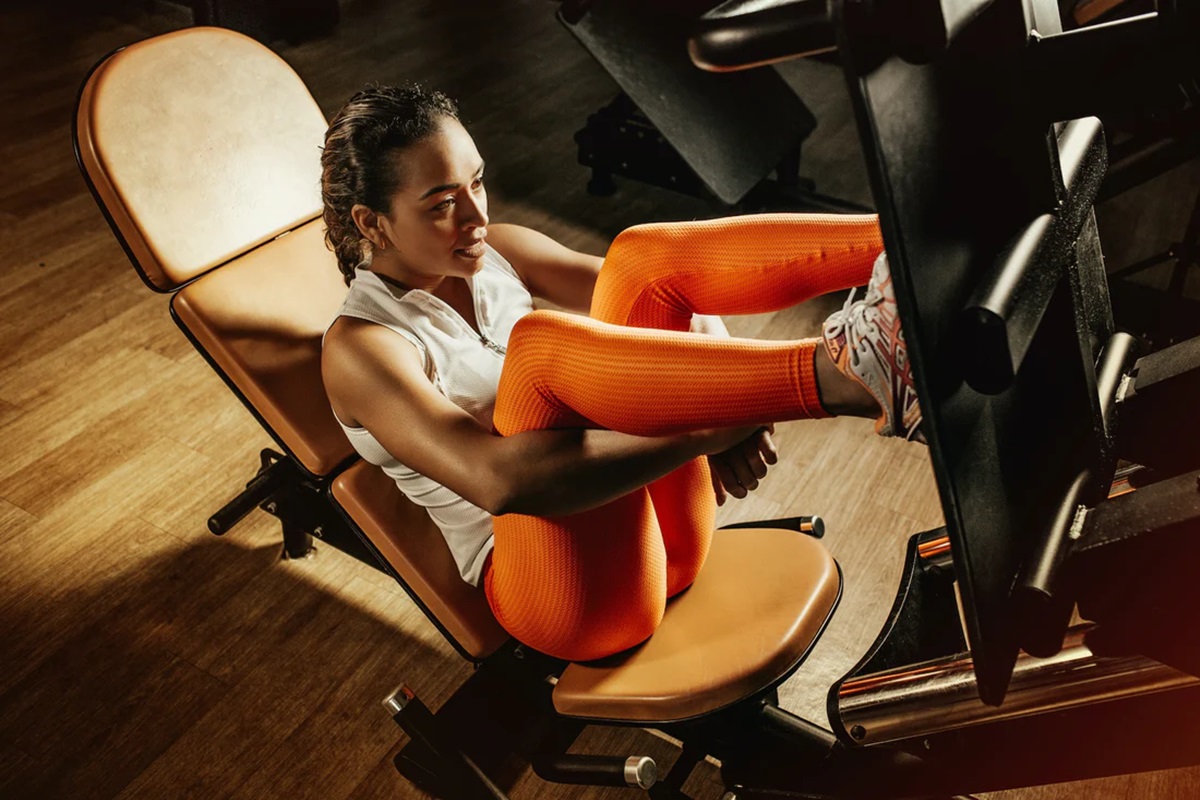

Featured
Why Do Exercise Needs Vary Between Individuals
Published: September 26, 2023
Discover why exercise needs can vary greatly from person to person, and how understanding your unique needs can help you personalize your fitness routine. Featured insights for a healthier you.
Introduction
When it comes to exercise, it is important to recognize that there is no one-size-fits-all approach. Exercise needs can vary significantly between individuals, depending on various factors such as genetics, age, overall health, body composition, and personal goals. Understanding and acknowledging these differences is crucial in order to develop a tailored exercise plan that will meet the unique needs of each individual.
Exercise is a vital component of a healthy lifestyle, offering numerous benefits such as improved cardiovascular health, weight management, increased strength and flexibility, and enhanced mood and mental well-being. However, the amount and type of exercise required to achieve these benefits can differ greatly from person to person.
In this article, we will explore the factors that influence exercise needs and why they can vary so significantly between different individuals. By understanding these factors, you will be better equipped to determine your own exercise requirements and create a fitness routine that will optimize your health and well-being.
Factors that Influence Exercise Needs
There are several key factors that influence an individual’s exercise needs. These factors can vary greatly between individuals and play a significant role in determining the type, intensity, and frequency of exercise required to achieve desired results. Let’s take a closer look at these factors:
- Genetics: Your genetic makeup has a profound impact on your body’s response to exercise. Genetic factors can influence your muscle fiber composition, metabolism, and aerobic capacity. Some individuals may naturally have a higher predisposition for endurance activities, while others may excel in explosive movements or strength-based exercises. Understanding your genetic strengths and weaknesses can help you tailor your exercise routine accordingly.
- Age and Stage of Life: Age is another crucial factor that affects exercise needs. As we age, our bodies undergo various physiological changes, such as a decrease in muscle mass and bone density. Older individuals may require exercises that focus on strength training and balance to maintain functionality and prevent age-related conditions. Additionally, exercise needs can vary depending on life stages, such as pregnancy or postpartum, where certain exercises may need to be adapted or modified.
- Overall Health and Fitness Level: Your current health status and fitness level play a significant role in determining exercise needs. Individuals with pre-existing medical conditions or injuries may require specialized exercise programs or modifications to safely engage in physical activity. Furthermore, those who are already physically fit may have higher exercise needs to continue challenging and improving their fitness level.
- Body Composition and Metabolism: Your body composition, including your muscle mass, body fat percentage, and metabolic rate, can influence your exercise needs. For example, individuals with a higher percentage of muscle mass may require more strength and resistance training to maintain and build lean muscle. On the other hand, those with a higher body fat percentage may benefit from cardiovascular exercises to aid in weight loss.
- Personal Goals and Preferences: Your personal goals and preferences also play a significant role in determining exercise needs. Some individuals may be focused on weight loss, while others may prioritize building muscle or improving athletic performance. Your preferences and interests can influence the type of exercises you enjoy and are more likely to stick with in the long run.
- Individual Response to Exercise: Each person’s body responds differently to exercise stimuli. Some individuals may see significant improvements in fitness and health from shorter, high-intensity workouts, while others may require longer durations of moderate-intensity exercise to achieve similar results. It is important to listen to your body, monitor your progress, and modify your routine accordingly to ensure optimal benefits.
By considering these factors, you can gain a deeper understanding of why exercise needs vary between individuals. It is essential to recognize and respect these differences to develop an exercise plan that suits your unique needs and helps you achieve your desired goals.
Genetics
Genetics plays a significant role in determining an individual’s exercise needs and potential athletic capabilities. The genes we inherit from our parents can influence various aspects of our physiology and athletic performance, including muscle fiber composition, metabolism, and aerobic capacity.
One of the primary genetic factors that affect exercise needs is muscle fiber composition. There are two main types of muscle fibers: slow-twitch (Type I) and fast-twitch (Type II) fibers. Slow-twitch fibers are more efficient in endurance activities as they can sustain contractions over an extended period. Fast-twitch fibers, on the other hand, generate more force and are responsible for explosive movements. The proportion of these fibers can vary greatly between individuals due to genetic factors.
Individuals with a higher proportion of slow-twitch fibers may excel in endurance activities such as distance running, swimming, or cycling. They tend to have a higher aerobic capacity, enabling them to perform activities for a longer duration without fatigue. In contrast, individuals with a higher proportion of fast-twitch fibers may have more strength and power, making them better suited for activities that require explosive movements and short bursts of energy, such as sprinting or weightlifting.
Besides muscle fiber composition, genetics can also influence an individual’s metabolism. Some people are genetically predisposed to have a higher metabolic rate, which means they burn calories more efficiently. These individuals may find it easier to maintain or lose weight compared to those with a slower metabolism. However, it is important to note that genetics is just one piece of the puzzle when it comes to metabolism, and factors such as age, body composition, and lifestyle also play a significant role.
Furthermore, certain genetic variations can affect an individual’s response to exercise. For example, the “ACTN3” gene has been linked to athletic performance and muscle power. Individuals with a specific variation of this gene may have a greater potential for power-based activities. Other genetic variations may affect factors such as recovery rate, injury susceptibility, or endurance performance.
While genetics can influence our exercise needs and athletic potential, it’s important to remember that they do not solely determine our abilities. The environment, training, nutrition, and lifestyle choices also play significant roles in our overall fitness and performance.
Understanding your genetic predispositions can provide valuable insights and help you tailor your exercise routine to optimize your strengths and work on areas that may require improvement. However, it is essential to remember that everyone can benefit from regular physical activity, regardless of their genetic makeup. Whether you have a genetic advantage or not, finding activities you enjoy and actively participating in them will contribute to better health and well-being.
Age and Stage of Life
Age is a fundamental factor that influences exercise needs and requirements throughout our lives. As we grow older, our bodies undergo various physiological changes that impact our overall health, fitness level, and exercise capacity.
In younger years, exercise needs may focus more on development and building a strong foundation of fitness. Children and adolescents benefit from a wide range of physical activities that promote growth, motor skills, and cognitive development. Engaging in activities such as sports, dance, and outdoor play helps promote healthy growth and development in these stages of life.
As we enter adulthood and reach middle age, exercise needs may shift towards maintaining optimal health and preventing age-related conditions. Regular exercise can help prevent chronic diseases, maintain muscle strength and bone density, and support cardiovascular health. Depending on individual circumstances and preferences, adults may engage in activities such as aerobic exercise, strength training, flexibility exercises, and low-impact workouts to cater to their exercise needs.
In older adulthood, exercise needs become increasingly important for maintaining functionality, independence, and overall well-being. Aging is associated with a natural decline in muscle mass, bone density, and flexibility. Physical exercise can help counteract these effects and alleviate the risk of falls, fractures, and other age-related conditions. Exercises that focus on strength, balance, and flexibility, such as resistance training, yoga, and tai chi, can be especially beneficial during this stage of life.
Furthermore, exercise needs can be influenced by various life stages, such as pregnancy and postpartum. During pregnancy, exercise can help promote a healthy pregnancy, manage weight gain, and prepare the body for childbirth. However, exercise routines need to be modified and aligned with the guidance of healthcare professionals to ensure the safety of both the mother and the baby. Postpartum, exercise can aid in restoring strength and energy levels, improving mood, and promoting weight loss. Again, it is important to consult with healthcare providers for appropriate exercise recommendations during this stage.
It’s worth noting that while exercise needs may differ depending on age and life stage, physical activity remains essential at every stage of life. Regular exercise offers numerous benefits, including improved cardiovascular health, enhanced mood, increased energy levels, and better overall quality of life.
By understanding the specific exercise needs associated with age and life stage, individuals can develop exercise routines that cater to their unique requirements and promote optimal health and longevity.
Overall Health and Fitness Level
An individual’s overall health and fitness level are crucial factors that significantly influence their exercise needs. The level of physical fitness, as well as any pre-existing medical conditions or injuries, can determine the type, intensity, and duration of exercise that is suitable and beneficial for each individual.
Individuals who are already physically fit and have a higher level of cardiovascular endurance and muscular strength may require more intense and challenging workouts to maintain and improve their fitness level. These individuals may engage in activities such as high-intensity interval training, weightlifting, or advanced aerobic exercises to continue progressing and pushing their physical limits.
On the other hand, individuals who are just starting their fitness journey or have lower fitness levels may have different exercise needs. It is crucial for beginners to start slowly and gradually increase their exercise intensity and duration to avoid injury and prevent overexertion. Engaging in activities such as low-impact cardio exercises, walking, swimming, or yoga can be beneficial for individuals with lower fitness levels.
Additionally, individuals with pre-existing medical conditions or injuries may require specialized exercise programs or modifications to accommodate their specific needs. For example, individuals with heart conditions may need to focus on exercises that improve cardiovascular health while minimizing stress on the heart. Those with joint issues or injuries may need to modify certain exercises or engage in low-impact activities to avoid further damage. It is important for individuals with pre-existing conditions to consult with healthcare professionals or qualified fitness instructors to ensure that their exercise routine is safe and appropriate for their specific health needs.
Overall, exercise should be viewed as a tool for improving and maintaining overall health. It is essential to consider individual health parameters such as blood pressure, cholesterol levels, and body weight when determining exercise needs. Regular exercise can help manage weight, lower the risk of chronic diseases, improve cardiovascular health, enhance mood and mental well-being, boost immune function, and improve overall quality of life.
Ultimately, the goal should be to engage in regular physical activity that challenges and improves overall fitness level, while also taking into account individual health considerations and needs. By tailoring an exercise routine to individual health and fitness levels, individuals can optimize their exercise benefits and promote long-term health and well-being.
Body Composition and Metabolism
The composition of our bodies, including muscle mass, body fat percentage, and metabolism, plays a significant role in determining our exercise needs. Understanding these factors can help individuals develop exercise routines that are specific to their body type and goals.
One important aspect of body composition is muscle mass. Individuals with a higher percentage of muscle mass may have higher exercise needs when compared to those with a lower muscle mass. Muscle is metabolically active tissue, meaning it burns more calories at rest compared to fat. Therefore, individuals with a higher muscle mass may benefit from incorporating strength training exercises into their routine to maintain and build lean muscle mass.
Body fat percentage is another crucial element that influences exercise needs. Those with a higher body fat percentage may require more emphasis on cardiovascular exercises to aid in weight loss and reduce body fat. On the other hand, individuals with a lower body fat percentage may focus more on maintaining muscle mass and achieving a toned physique.
Metabolism also plays a role in determining exercise needs. Metabolic rate can vary between individuals due to factors such as genetics, age, and overall health. Those with a faster metabolism may find it easier to burn calories and maintain a healthy body weight, while those with a slower metabolism may need to be more mindful of calorie intake and engage in regular exercise to support weight management.
Furthermore, body composition and metabolism can be influenced by hormonal factors, such as levels of testosterone, estrogen, and cortisol. Hormonal imbalances or fluctuations can impact an individual’s ability to lose weight or gain muscle mass. In such cases, exercise routines may need to be customized to address hormonal imbalances and optimize overall body composition.
Understanding one’s body composition and metabolism helps in setting realistic goals and developing personalized exercise programs. Whether the goal is weight loss, muscle gain, or overall fitness improvement, focusing on a combination of cardiovascular exercise, strength training, and flexibility exercises can be beneficial for individuals with different body compositions and metabolic rates.
It is important to note that body composition and metabolism can change over time due to factors such as aging, hormonal changes, or lifestyle factors. Regular assessment and adjustment of exercise routines may be necessary to accommodate these changes and ensure continued progress.
By considering body composition and metabolism, individuals can tailor their exercise routines to optimize their goals and achieve the desired results, whether it is building lean muscle, losing body fat, or improving overall body composition.
Personal Goals and Preferences
One of the most influential factors that affect exercise needs is an individual’s personal goals and preferences. Every person has unique aspirations and motivations when it comes to engaging in physical activity, and these goals and preferences play a significant role in determining the type, intensity, and duration of exercise that is most suitable for them.
Personal goals can vary widely, ranging from weight loss and body transformation to improving athletic performance, increasing strength and endurance, or simply maintaining overall health and well-being. The specific goals individuals have will shape their exercise needs and the focus of their workout routines.
For example, someone who aims to lose weight may benefit from incorporating a combination of cardiovascular exercises to burn calories and shed excess fat. On the other hand, an individual focused on building muscle and increasing strength may prioritize resistance training exercises that target different muscle groups.
Personal preferences also play a crucial role in determining exercise needs. Engaging in physical activities that you enjoy and find fulfilling is key to maintaining consistency and long-term adherence to an exercise routine. If someone dislikes traditional gym workouts, they may prefer alternative activities such as swimming, dancing, hiking, or playing a sport. By aligning exercise preferences with personal goals, individuals are more likely to stay motivated and committed to their fitness journey.
Moreover, some individuals may prioritize variety and enjoy a diverse range of physical activities. Cross-training, which involves participating in multiple types of exercises or activities, can be an excellent approach for individuals who thrive on variety and want to engage different muscle groups and energy systems.
It’s important to note that personal goals and preferences can evolve over time. As individuals progress and reach their initial goals, priorities may shift, and new objectives may arise. Therefore, it’s crucial to regularly assess goals and preferences and adjust exercise routines accordingly to continue challenging oneself and fostering growth.
By considering personal goals and preferences, individuals can shape their exercise routines to align with their unique aspirations and motivations. This not only makes the exercise more enjoyable but also increases the likelihood of long-term adherence and success in achieving desired outcomes.
Individual Response to Exercise
Individuals respond differently to exercise, both in terms of physiological adaptations and perceived benefits. This concept of individual response to exercise is important to consider when determining exercise needs and developing personalized fitness programs.
Some individuals may experience rapid improvements in fitness and health with relatively minimal exercise, while others may require more intensive and longer-duration workouts to see similar results. This variation in response can be attributed to various factors, including genetics, age, baseline fitness level, and overall health.
Genetic factors play a significant role in determining how the body responds to exercise stimuli. Some individuals may have a genetic predisposition to greater muscle growth and strength gains, while others may experience greater improvements in cardiovascular fitness or flexibility. These genetic differences can influence how individuals should structure their exercise routines to optimize their unique responses.
Age is also a factor that affects individual response to exercise. Generally, younger individuals may see faster and more significant progress in physical adaptations due to their higher natural levels of growth hormone and testosterone. However, older individuals can still achieve meaningful improvements in fitness and health with regular exercise, although the rate of progress may be slower.
Baseline fitness level and overall health can also impact individual response to exercise. Those who are already physically fit may need to implement progressive overload and more challenging exercises to continue reaping benefits and avoiding plateaus. On the other hand, individuals who are sedentary or have health conditions may experience more noticeable improvements in cardiovascular fitness, weight management, and overall health when starting an exercise program.
Additionally, individual preferences and adherence to an exercise routine can influence the response to exercise. If someone enjoys and consistently engages in activities they find enjoyable, they are more likely to experience positive physiological and psychological changes. It is important to choose activities that align with personal interests and maintain a routine that is sustainable and enjoyable to promote ongoing engagement and adherence.
Being aware of one’s individual response to exercise is crucial in optimizing results and avoiding potential discouragement. Identifying and tracking progress can help individuals make necessary adjustments to their exercise routines, such as increased intensity, modified exercises, or changes in volume, to ensure continuous improvement and prevent staleness.
It is important to note that individual response to exercise is multifaceted and can vary based on individual circumstances. Monitoring progress, consulting with professionals, and being attentive to individual cues and needs can guide the development of an effective and fulfilling exercise program tailored to each person’s unique response.
Understanding Your Unique Exercise Needs
Understanding your unique exercise needs is crucial for developing an effective fitness routine that aligns with your goals, preferences, and individual characteristics. By taking into account factors such as genetics, age, health and fitness level, body composition, personal goals, and response to exercise, you can create a personalized exercise plan that maximizes the benefits and leads to long-term success.
Start by assessing your personal goals and aspirations. Determine what you want to achieve through exercise, whether it’s weight loss, muscle gain, improved cardiovascular fitness, enhanced athletic performance, or overall well-being. Identifying your goals will help you structure your exercise routine and choose the most appropriate types of exercises to work towards those objectives.
Consider your genetic attributes and body composition. Understand your natural strengths and weaknesses when it comes to exercise. Reflect on your muscle fiber composition, metabolism, and other genetic factors that may influence your physical capabilities. This knowledge can guide you in selecting exercises that are better suited to your unique genetic makeup.
Take into account your age and stage of life. Recognize the changes that occur as you age and adapt your exercise routine accordingly. If you are in an older stage of life, focus on exercises that promote strength, balance, and flexibility to maintain functionality and prevent age-related conditions. If you are younger or in your prime, you may have a greater capacity for higher intensity workouts and building muscle mass.
Assess your overall health and fitness level. Consider any pre-existing medical conditions, injuries, or physical limitations that may affect your exercise routine. Consult with healthcare professionals or qualified fitness instructors if necessary to ensure that your exercise plan is safe and appropriate for your health needs. Adjust your routine accordingly to accommodate any specific requirements and to promote overall well-being.
Take into account your individual response to exercise. Pay attention to how your body reacts and adapts to various forms of physical activity. Notice how your fitness level progresses, how your energy levels improve, and how you feel both physically and mentally after each workout. Adjust your routine based on this feedback to optimize your individual response and foster continued progress.
Lastly, listen to your own preferences and interests. Choose activities that you enjoy and are more likely to engage in consistently. This will increase your motivation and adherence to your exercise routine. If you find traditional gym workouts monotonous, explore alternative forms of exercise such as group classes, outdoor activities, or sports that align with your preferences.
Understanding your unique exercise needs allows you to develop an exercise plan that is tailored to your specific goals, genetic attributes, age, health, and personal preferences. It empowers you to make informed decisions and adjustments to optimize your results, maintain motivation, and enjoy the process of improving your fitness and overall well-being.
Conclusion
Recognizing that exercise needs vary between individuals is essential for developing effective and personalized fitness routines. The factors that influence exercise needs, such as genetics, age, overall health and fitness level, body composition, personal goals, and individual response to exercise, all play significant roles in shaping exercise requirements.
Genetics contribute to variations in muscle fiber composition and metabolism, impacting an individual’s athletic capabilities and preferred exercise types. Age and stage of life influence exercise needs, with different considerations for children, adults, and older adults. Overall health and fitness level dictate the intensity and type of exercise that is appropriate and beneficial for each individual. Body composition affects exercise needs, with muscle mass, body fat percentage, and metabolic rate playing significant roles. Personal goals and preferences guide exercise choices and help maintain motivation. Finally, individual responses to exercise determine the effectiveness of a fitness routine and necessitate adjustments to optimize personal progress.
By understanding these factors and recognizing our unique exercise needs, we can develop tailored exercise programs that align with our goals and optimize our health and well-being. It is important to listen to our bodies, seek guidance from professionals when needed, and adapt our routines based on our individual characteristics and responses to exercise.
Remember, exercise is not a one-size-fits-all approach. It is an ongoing journey of self-discovery and improvement. Embrace your unique exercise needs, stay committed to your goals, and enjoy the journey towards a healthier, stronger, and happier you.

